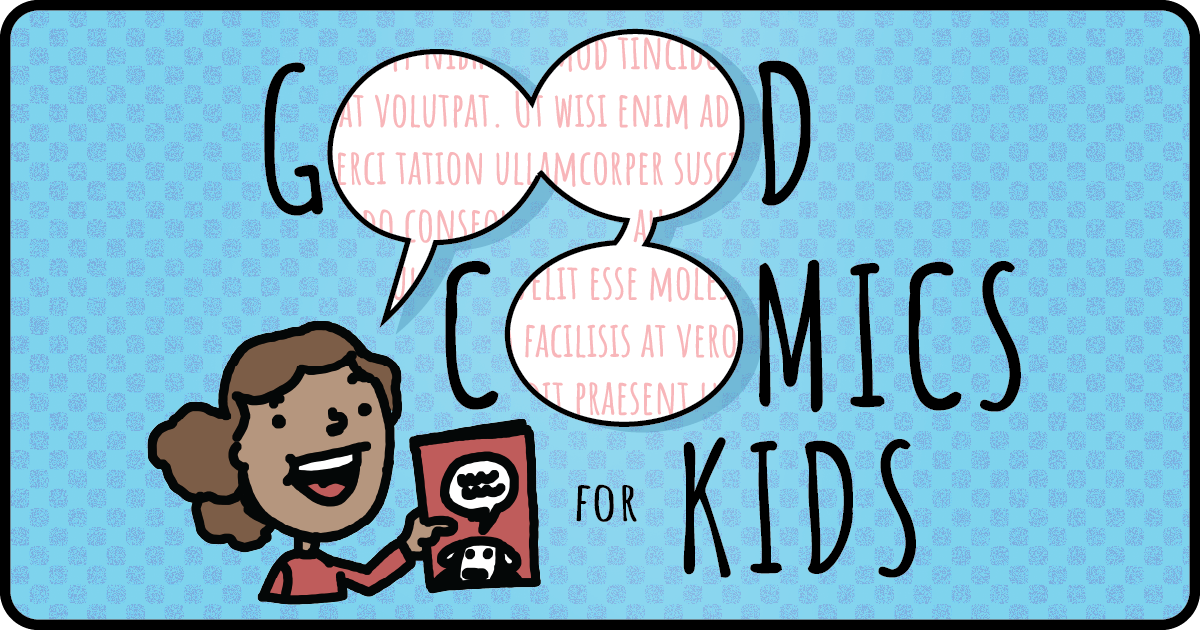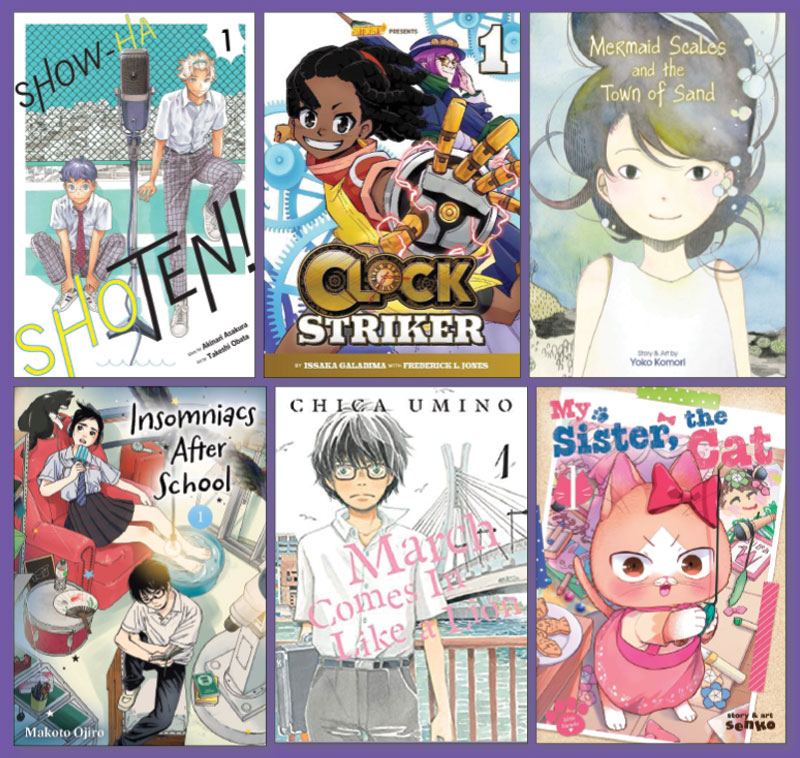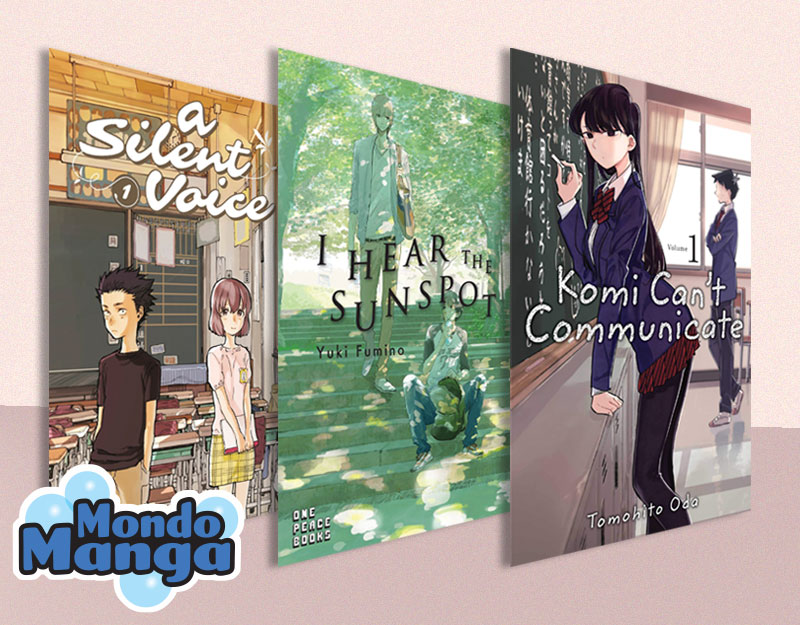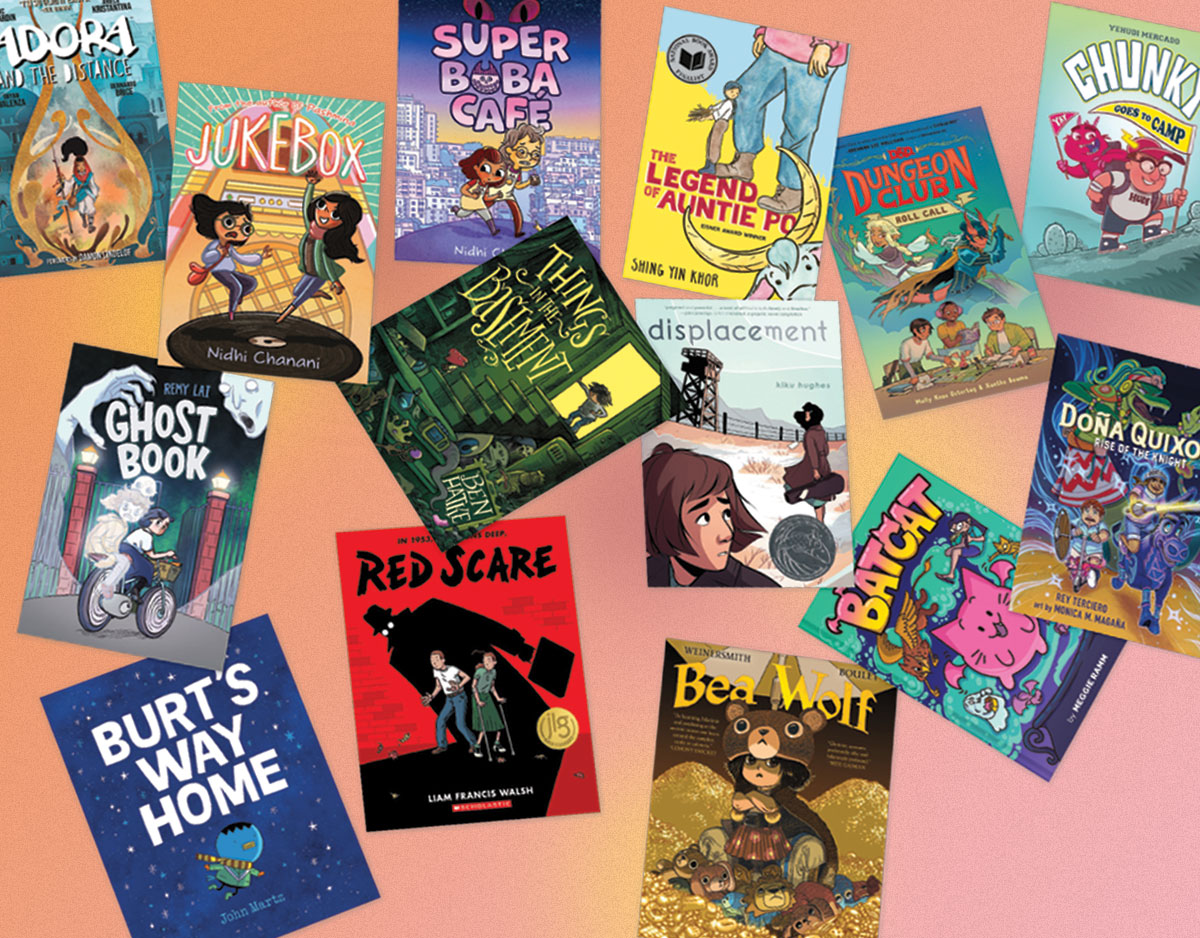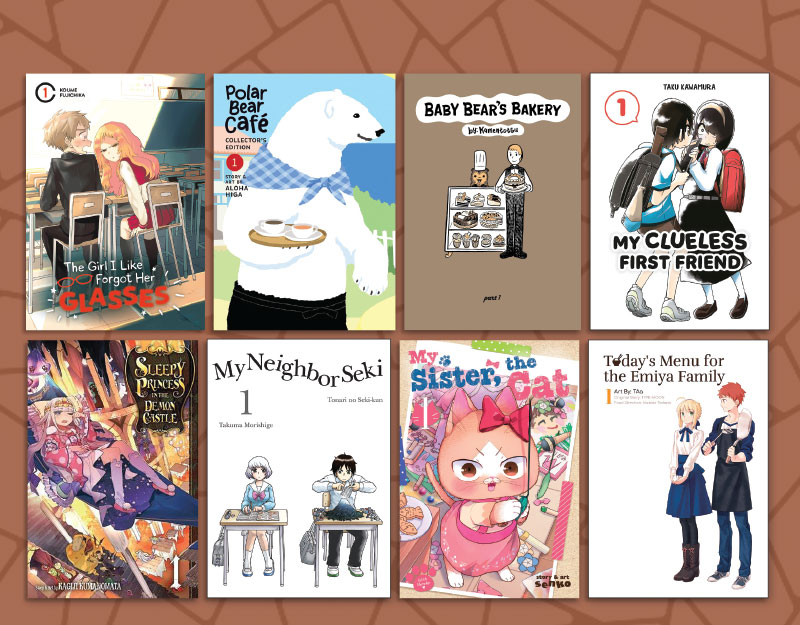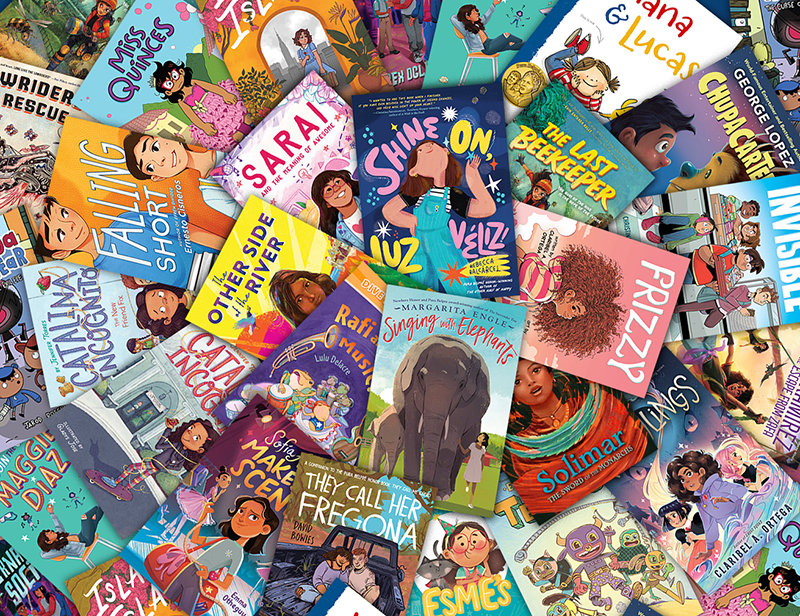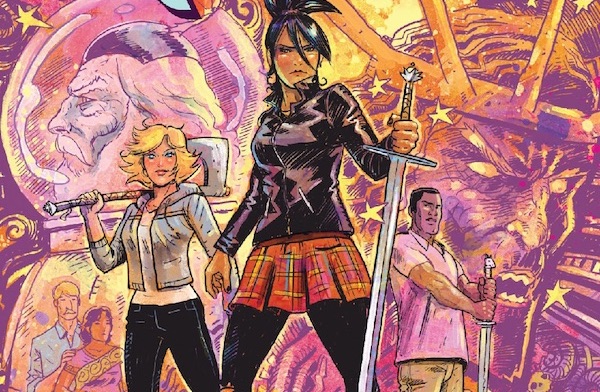
Interview: ‘The Once and Future Queen’
It’s a pretty daring move to try retelling the King Arthur legend one more time, but in The Once and Future Queen, writers D.J. Kirkbride and Adam Knave and artist Nick Brokenshire rise to the task by moving beyond the usual tropes and reinventing not just the characters but the whole structure of the story. Modern-day chess prodigy Rani Arturus travels to England for a match and stumbles into a cave where Merlin (wearing a space helmet—his incongruous outfits are a running joke in this story) gives her the news that she’s the chosen one. She soon teams up with Lance and Gwen, and they form both a formidable fighting trio and an unusual love triangle; Morgan LeFay is there, and the main arc of this first volume is the fight against the Fae. Thus it includes some epic battle scenes, but there’s also a consideration of the consequences of violence and a suggestion that perhaps all conflicts aren’t best settled by violence.
 We talked to Kirkbride, Knave, and Brokenshire about how they went from the well-worn Arthur story to a modern, sometimes surprising, graphic novel.
We talked to Kirkbride, Knave, and Brokenshire about how they went from the well-worn Arthur story to a modern, sometimes surprising, graphic novel.
How did you first hear the legend of King Arthur? How old were you, and how did your conception of the story change over the years?
Nick Brokenshire: Hmm. It’ll be one of two things. Either a storybook that my Auntie Doreen gave me, or something on television that I recall seeing as a kid. I didn’t equate the Disney thing with Arthurian legend until much later for some reason. In my early teens I started to read a lot of fantasy which in turn led me to explore mythology and naturally, Arthurian lore. By the time I was sixteen I also was delving into things like Tennyson who drew upon the legend a lot. I read a few Arthurian novels and then worked my way (often with gritted proverbial teeth) through Le Morte d’Arthur.
ADVERTISEMENT
ADVERTISEMENT
D.J. Kirkbride: It feels like King Arthur is a pop cultural icon up there with Superman and Zorro and Luke Skywalker and all the stories and characters I can’t remember or imagine my life without. My knowledge base is way less substantial than Nick’s or Adam’s, though. For me, it’s The Sword and the Stone, both the Disney movie and the first third of T.H. White’s The Once and Future King (great title, right?) upon which it’s based, and John Boorman’s shiny and grimy Excalibur– a movie I probably was too young to see way back when I saw it. The legend has gained greater depth and shades of gray over the years for me from the animated version I remember watching at the local library on some “kids’ fun day” afternoon thing when I was nine or ten.
Adam P. Knave: I read The One and Future King as a kid and then saw Excalibur far too young. I loved both, but the legends didn’t really start to shift for me until Camelot 3000 happened and I saw everything was mutable, if you wanted. The story, the legend itself, was organic. Word of mouth passed down and sometimes written out and acted out, but always willing and able to change.
What were you determined to eliminate from the original legend?
Brokenshire: The idea is very much that nothing is eliminated so to speak, but merely added to. In our story the man who was King Arthur did exist and he had amazing adventures only there is more to story that needs to told. A dimension that we are adding.
Knave: For myself, I don’t know if there was anything that stood out as having to go, from the start. Everything was up for grabs, really. Importantly we simply reviewed everything and were deeply open to change. Nick and I were the most familiar with the legend as it stood, so we relied on D.J. to pull us back and go “No, we can totally reconsider this,” whenever we wound up too involved in the legend. Luckily there is no one definitive source for the legend(s) so we could pick and choose and warp and play to our heart’s delight.
Kirkbride: Yeah, my relative ignorance meant being able to think more about our own story, getting in takes on some of the broad strokes while focusing on the comic book the three of us wanted to make. I knew they’d chime in if anything went terribly amiss. My hope is that we settled in on a nice healthy mix of expert and, well, me.
What was important for you to keep?
Brokenshire: A bloomin’ great sword! Cornwall and the magic that resides there.
Kirkbride: Haha, yeah, and I’m glad Nick drew Excalibur so huge! That was something we decided to explain, how anyone could wield a big blade that big so easily. That and the feeling of trying to do well with romance and magic and mystery. It’s all about the scope and feel and grandeur, regardless of era.
Knave: The weight of the responsibility felt important to keep around as well. “Here you go, you’re the great uniter, good luck.” isn’t something anyone would cope well with at first. Not something that comes simply.
You have an unusual love triangle in this story—it doesn’t involve rejection or jealousy. Rather, it’s polyamorous—or at least, it’s heading this way. Why did you decide to do that? Were you concerned that an amiable relationship would lack tension?
Knave: Oh it is a poly vee relationship, very much so. We decided on that fairly early on, as a way to undercut some of the expectations of Arthurian Legend but also because it isn’t something a lot of stories deal with, right now, and we felt they should get good press, too. On the other hand, anyone who thinks a relationship automatically lacks tension is kidding themselves. It may not have the same type of tension a romantic triangle would, but there are possible tensions galore in any relationship, doubly so amongst people who are inexperienced, as our leads are. Relationships take time and work, all of them.
Brokenshire: The world is changing in subtle ways as well as outrageous ways. This subject matter is so ‘now’ and yet feels like an area of life that seem as old as time and natural to have to deal with in a story about teens.
Kirkbride: It started as us not wanting to fall into predictable beats and organically became something I’m really happy is in the comic. I love that these three just naturally want to make it work, though, as Adam says, there’s no such thing as a totally perfect relationship.
Also, one of the characters is asexual. That’s not something that gets talked about a lot in comics, or most other popular media. Why did you go with that?
Knave: Well it isn’t talked about a lot in most media. That there is reason enough. There’s also cultural stigma with asexuals and asexual relationships. They’re often portrayed badly, to be honest, as if it is a problem, or a “Thing Wrong With A Person,” when in reality it is neither. It is simply a node on the spectrum of human sexuality. Certainly different people will be at different areas as well, so we don’t pretend to be symbolic of all asexuals everywhere. This character is a Romantic Asexual as opposed to Aromantic, because even within asexuality there’s a spectrum. All of this is far more complex than people seem to want to dig into often, and it leaves people deeply underrepresented in media. So if we can change that, even a tiny amount, it is more than worth doing. Also, it was just how the character came to be, and forcing them to be something they aren’t when you conceive them is a bad bit of business.
Kirkbride: Adam says it perfectly. I guess I’d add from personal experience that representation is very important in popular culture. As a straight white male kiddo, I kinda felt like I might grow up to be Superman, or at least Clark Kent. It meant a lot to me. I also realize most other comic book characters fell into similar categories, and that began feeling increasingly unfair. We want all readers to find something to relate to with our heroes. Also, this particular character is genuinely awesome and a lot of fun to write.
In a story like this, you have to balance the modern and the archaic. Mostly that seems to be bringing archaic things, such as swords and axes, into the modern world, but with Morgan in particular you bring in some modern twists, such as her computer turning into a crystal ball. And of course there are the Cheetos, and the Bic pen—very specific references to modern life. How did you come up with those details, and how do you keep that balance?
Brokenshire: Well, I have to give Adam and D.J. props for these concepts. I really liked the pen in particular!
ADVERTISEMENT
ADVERTISEMENT
Kirkbride: It was fun juxtaposing that kind of weaponry in the modern context of our world. With Excalibur, it’s just kind of a necessary and cool component of a take on Arthurian legend, but it was also fun giving Gwen and Lance their own special weapons, too. While Rani is the titular Queen, they are also incredibly important and deserve appropriate props. The other elements were fun in showing the opposite, too. There are some attempts of blending in our world and era for some characters. I’m also really glad you mentioned the Cheetos, but I’ll say no more.
I’m also intrigued that Merlin is trying to push Rani toward a peaceful solution—although the Fae seem anything but peaceful. How does this emphasis on peace play out in a story with so much fighting and such an unsympathetic enemy?
Kirkbride: This is part of the gray we wanted to have in our story. Part of it comes from our previous series Amelia Cole. It was very black and white, good versus evil. An Arthurian-style story seems like a no-brainer for that maybe simplistic but tried and true take, too, but we wanted to try to dig a little deeper. We look like monsters to the monsters, and, while their behavior is horrific, we hint that there might be a little more to it.
Knave: Defeating an enemy doesn’t have to mean you grind them into the dust. Peace is a viable option, and always worth looking at it. But Merlin, we explain in the story why he may, right now, want to push peace over war. He’s seen things. He knows what the costs are. War should never be entered into lightly.
Filed under: Graphic Novels, Interviews
About Brigid Alverson
Brigid Alverson, the editor of the Good Comics for Kids blog, has been reading comics since she was 4. She has an MFA in printmaking and has worked as a book editor, a newspaper reporter, and assistant to the mayor of a small city. In addition to editing GC4K, she is a regular columnist for SLJ, a contributing editor at ICv2, an editor at Smash Pages, and a writer for Publishers Weekly. Brigid is married to a physicist and has two daughters. She was a judge for the 2012 Eisner Awards.
ADVERTISEMENT
ADVERTISEMENT
SLJ Blog Network
The Moral Dilemma of THE MONSTER AT THE END OF THIS BOOK
Cover Reveal and Q&A: The One and Only Googoosh with Azadeh Westergaard
Fighting Public School Book Bans with the Civil Rights Act
ADVERTISEMENT

